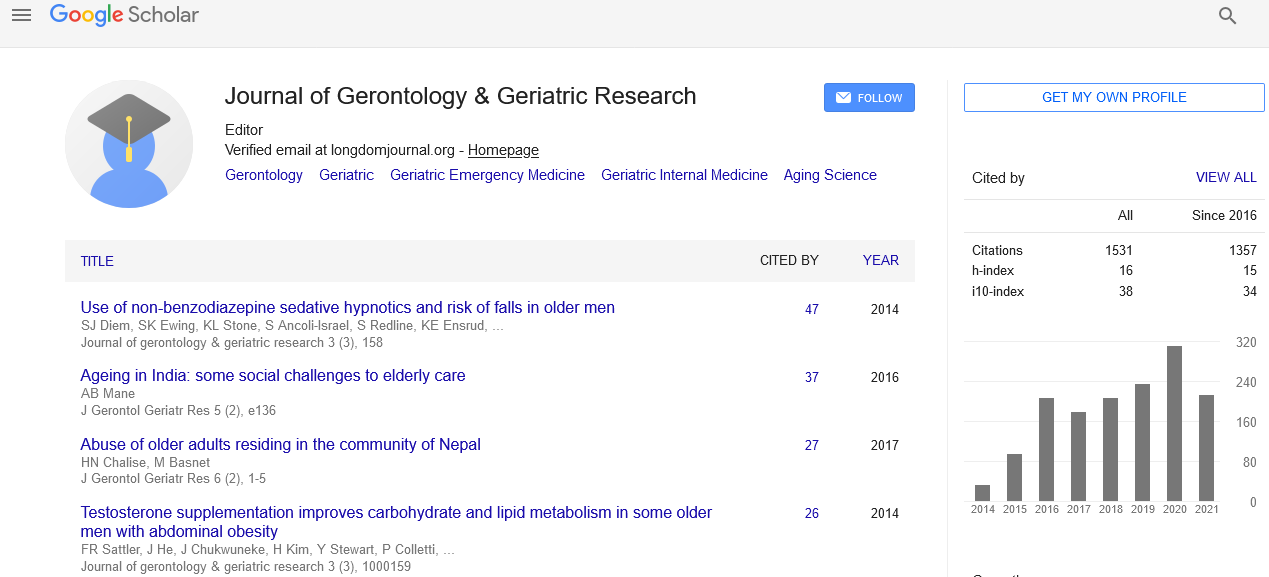PMC/PubMed Indexed Articles
Indexed In
- Open J Gate
- Genamics JournalSeek
- SafetyLit
- RefSeek
- Hamdard University
- EBSCO A-Z
- OCLC- WorldCat
- Publons
- Geneva Foundation for Medical Education and Research
- Euro Pub
- Google Scholar
Useful Links
Share This Page
Journal Flyer

Open Access Journals
- Agri and Aquaculture
- Biochemistry
- Bioinformatics & Systems Biology
- Business & Management
- Chemistry
- Clinical Sciences
- Engineering
- Food & Nutrition
- General Science
- Genetics & Molecular Biology
- Immunology & Microbiology
- Medical Sciences
- Neuroscience & Psychology
- Nursing & Health Care
- Pharmaceutical Sciences
Abstract
Does the Patients Age have an Influence on the Outcome of CESA (Cervico-Sacropexy) and VASA (Vagino-Sacropexy) for the Treatment of Urinary Incontinence in Women?
Wolfram Jager, Sebastian Ludwig and Peter Mallmann
About 40% of all women will develop urinary incontinence during their life, usually starting around the age of 50 years. It usually starts with the spontaneous undesired loss of urine during increased intra-abdominal pressure (coughing or sneezing) and will continue in even shorter time intervals to reach the toilet “just in time”. In its ultimate form the patient has no control anymore about her voiding function and is “always wet”. While previously only SUI, the “mild” form of urinary incontinence, could effectively be treated by the replacement of the PUL using suburethral tapes we now have the chance to cure also the moderate and severe forms of urinary incontinence. With the bilateral replacement of the USL by the CESA and VASA operations over 50% of all patients were cured. When the remaining patients received an additional TOT 8/4 the cure rate was increased up to more than 80% of the patients. We observed that the number of cured patients decreased with increasing age. While patients younger than 60 years have a nearly 90% chance of cure this chance decreases down to 65% for those patients older than 70 years. The fact that continence could be reestablished by CESA / VASA and a TOT 8/4 demonstrates that urinary incontinence can be cured by surgery in most patients. We are not certain which ageing effects were responsible for the diminishing cure rate with increasing age. As all our other calculations did not indicate any responsible factor for this observation, we probably did not measure the responsible factor so far.


